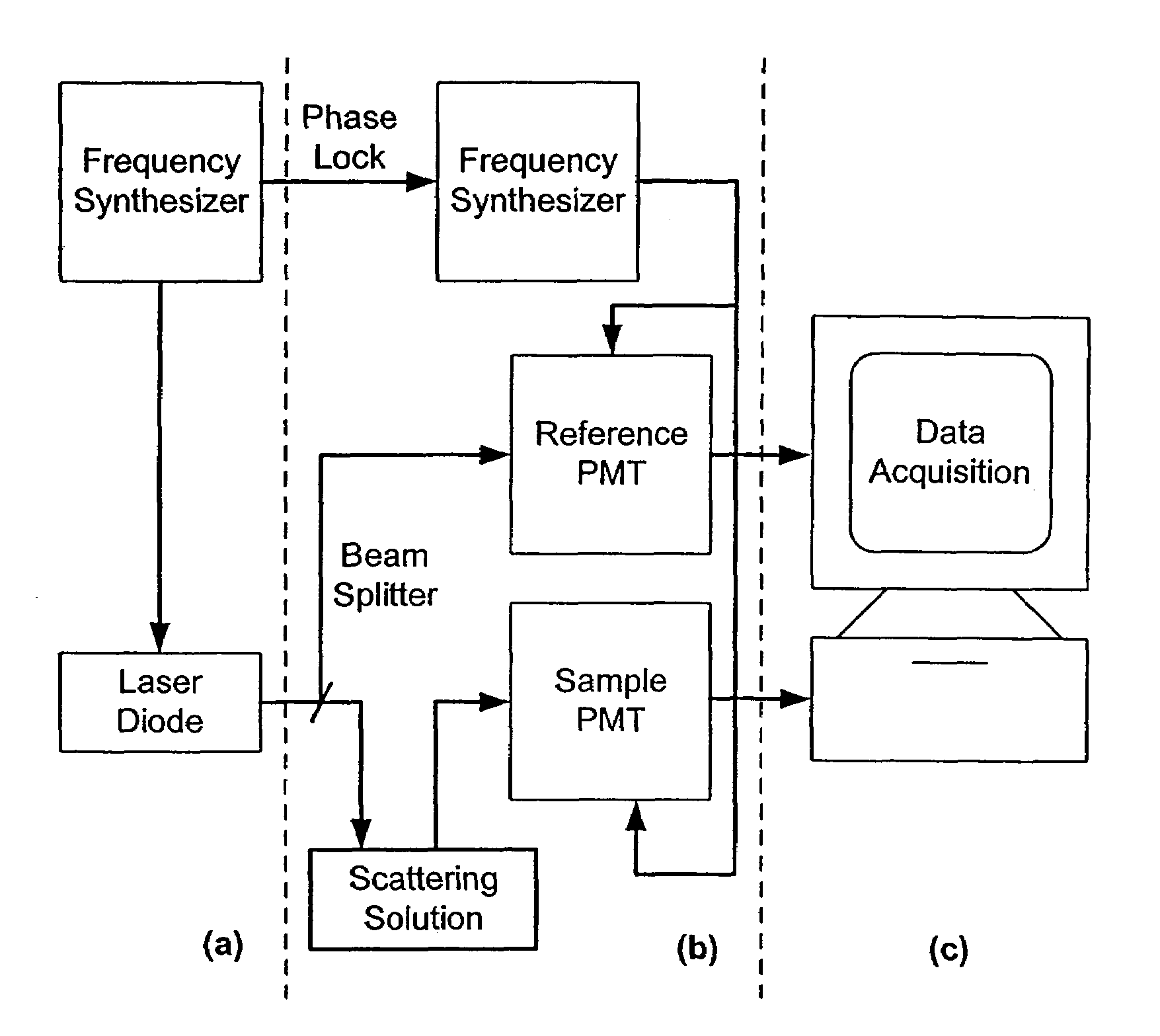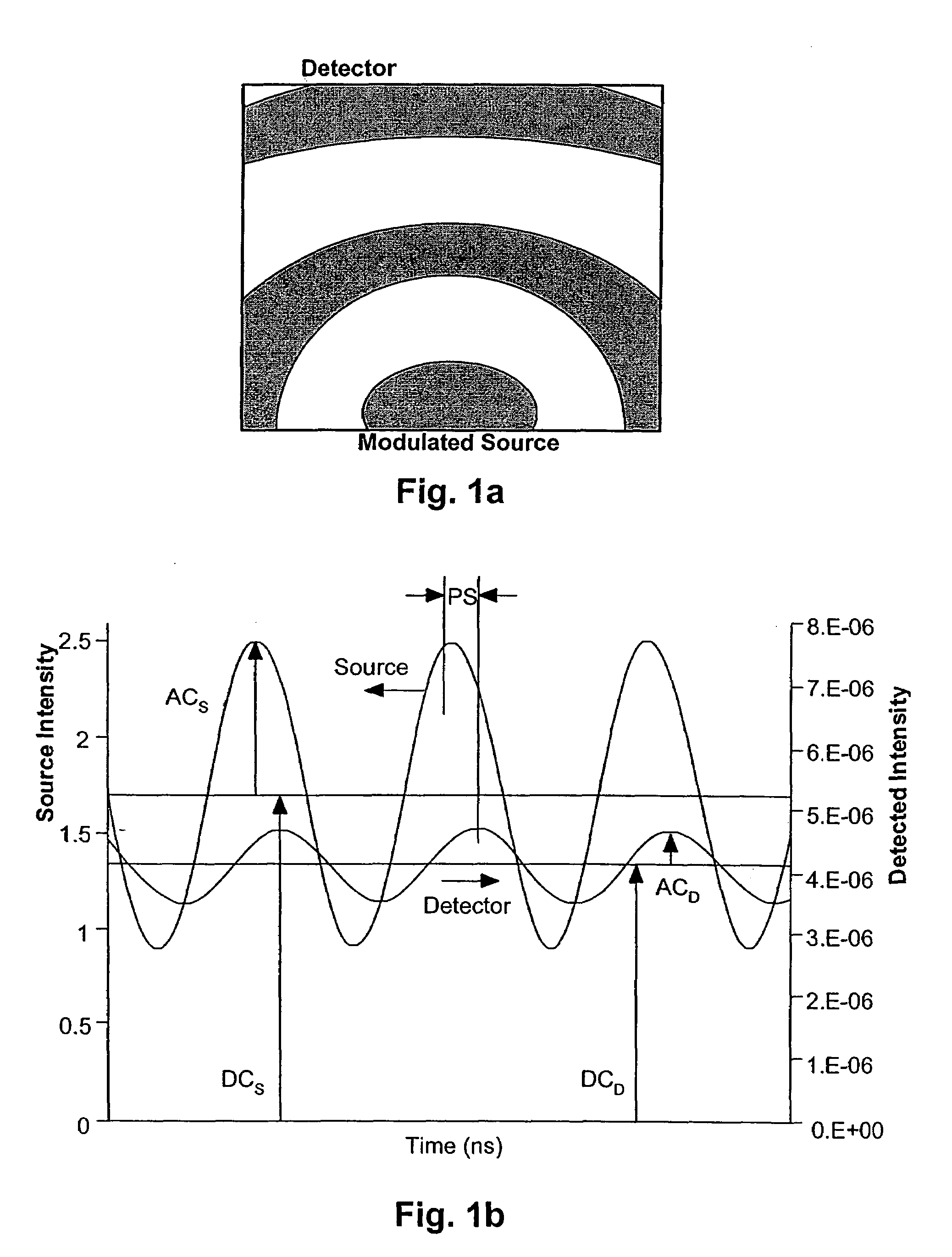Method for characterising particles in suspension from frequency domain photon migration measurements
a particle and frequency domain technology, applied in suspensions and porous materials analysis, instruments, material analysis, etc., can solve the problems of insufficient polydisperse concentrated system theories, inability to fully understand the theory of polydisperse concentrated systems, and inability to accurately characterise particle characteristics of multiple scattering
- Summary
- Abstract
- Description
- Claims
- Application Information
AI Technical Summary
Problems solved by technology
Method used
Image
Examples
example
[0107]A polydisperse sample of concentrated, surfactant stabilized, polystyrene suspension was provided by Dow Chemical, Midland, Mich., and used as received. The mean particle size, deviation and polydispersity of the polystyrene sample were measured by using DLS (ZETASIZER 3000, Malvern Instruments, U.K.) at dilute suspensions (˜0.01%), and the results are shown in Table 2.
[0108]
TABLE 2Mean sizeDeviation(nm)(nm)Polydispersity (%)DLS results143.5 ± 0.524.0 ± 1.216.7 ± 0.8
[0109]FDPM measurements were conducted at various particle concentrations ranging from 5% to 40% solids by volume. The stock solutions were diluted by deionized ultra filtered (DUF) water. The exact volume fractions of samples were determined by evaporation measurements, and are shown in Table 3.
[0110]
TABLE 3Crude volume 5% 10% 15% 20% 25% 30%fractionExact volume5.10%10.07%15.16%20.17%25.36%30.15%fraction
[0111]Based on the photon diffusion model, several different experimental approaches and regression strate...
PUM
 Login to View More
Login to View More Abstract
Description
Claims
Application Information
 Login to View More
Login to View More - R&D
- Intellectual Property
- Life Sciences
- Materials
- Tech Scout
- Unparalleled Data Quality
- Higher Quality Content
- 60% Fewer Hallucinations
Browse by: Latest US Patents, China's latest patents, Technical Efficacy Thesaurus, Application Domain, Technology Topic, Popular Technical Reports.
© 2025 PatSnap. All rights reserved.Legal|Privacy policy|Modern Slavery Act Transparency Statement|Sitemap|About US| Contact US: help@patsnap.com



